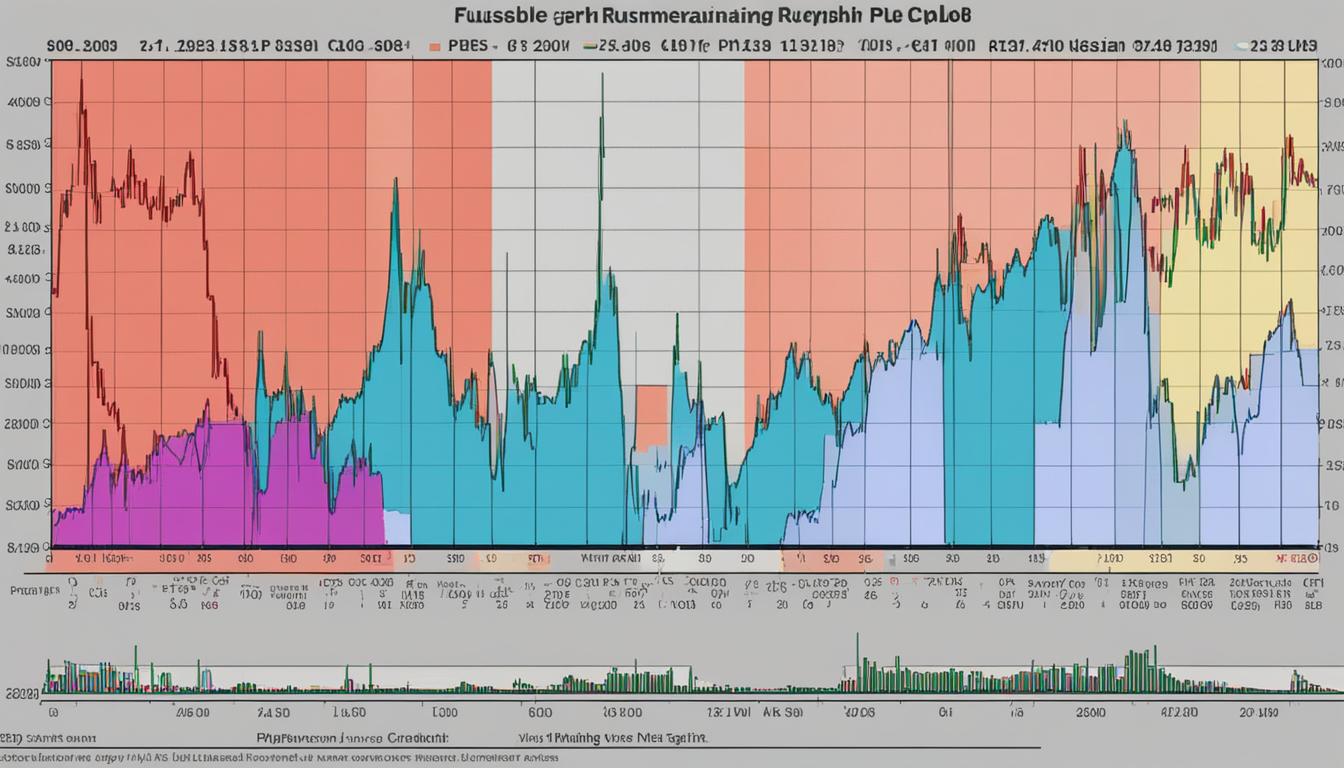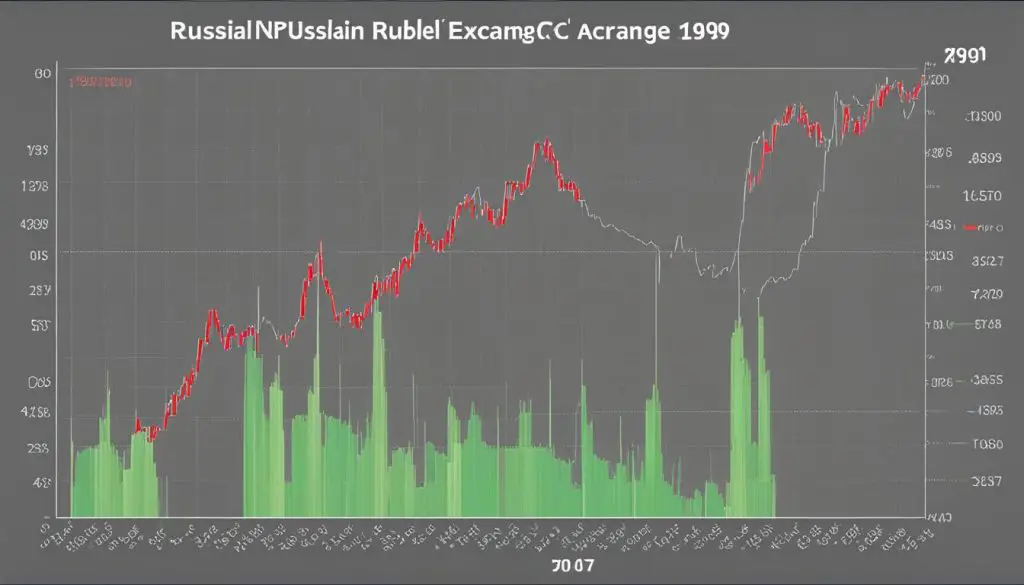When the annals of economic turmoil are leafed through, the 1998 Russian financial crisis emerges as a watershed moment of the late 20th century. It was an incident that shook the foundations of the Russian economy, leading to a cascade of events including the Ruble depreciation, a dire economic recession, and a sequence of shocks that reverberated through the global financial system. To comprehend the magnitude of the collapse, it’s essential to explore the interplay of factors that precipitated the banking crisis and the subsequent IMF bailout.
The roots of the Russian economy collapse dug deep into a fertile soil of fiscal mishandling and structural deficiencies. Ideals of a free market economy, hastily adopted post-1991, clashed violently with the realities of insufficient reforms. A fixed exchange rate burgeoned the country’s fiscal deficit, rendering its currency vulnerable. This vulnerability culminated in an eventual debt default, which triggered hyperinflation, obliterating real wages and leading to widespread asset devaluation.
As the narrative unfolds, this economical crisis stands as a stark reminder of the volatile nature of emerging markets and the catastrophic potential of policy missteps in the arena of global economics. Below, we dive deeper into the compelling story of the crisis, which continues to frame conversations around economic resilience and financial strategy.
Prelude to the Crisis
The roots of the 1998 Russian financial meltdown can be traced back to the critical years following the Soviet Union’s dissolution. A broad spectrum of economic reforms embarked on the tough journey of steering the nation from a centrally planned economy to the open seas of market dynamics. Privatization attempts alongside macroeconomic stabilisation policies were part of an ambitious agenda to implant a capitalist ethos into the Russian economic framework.
Post-Soviet Reforms and Economic Instability
During the early 90s, Russia experienced a wave of economic reforms, most notably privatisation, which intended to redistribute state-owned assets into private hands swiftly. This period was critical in laying down the groundwork for a capitalist market, significantly altering the economic landscape of the nation. However, these economic reforms, although audacious, also served as a premonition of the instability to come. They were part of a larger struggle to curb hyperinflation, a symptom of the macroeconomic imbalances that persisted post-Soviet era.
Currency Peg and the Role of the IMF
The introduction of a currency peg marked the attempt by Russian authorities to bring about stable exchange rate regimes and solidify investor confidence. By fixing the ruble to the US dollar, Russia aimed to control inflation and signal the commitment to fiscal prudence. The International Monetary Fund (IMF) played an instrumental role in supporting these macroeconomic stabilisation policies through loans and guiding frameworks tailored for the Russian economic climate.
External Shocks and Investor Confidence
The blossoming of investor confidence witnessed a setback with the onset of the Asian financial crisis. This global economic event undermined the fragile foundations of the Russian market reforms. The sweeping economic distress across Asia, alongside the currency crisis, revealed the inherent vulnerabilities of the Russian economy to external shocks, casting doubt over the effectiveness of the preceding economic stabilization measures.
In essence, the build-up to the Russian financial crisis was a complex interplay of ambitious economic reforms, an uncertain transition to market economy practices, and extrinsic economic upheavals that tested the resilience of nascent investor confidence. These elements combined to set the stage for what would become one of the most significant economic crises of the late twentieth century.
The 1998 Russian Financial Crisis
The onset of the 1998 Russian financial crisis sent shockwaves through the economy as it grappled with a series of calamitous events. The most alarming was the ruble devaluation, which saw the currency’s value nosedive in an inconceivably short timeframe. As investors withdrew en masse, fearing the impending crisis, the government was propelled into declaring a sovereign debt default, while banks faced a banking crisis of unprecedented scale.
Amidst the escalating financial market turmoil, measures that were intended to salvage the economy produced the opposite effect. A severe hike in interest rates backfired, leaving the state’s coffers emptied by debt repayment obligations that far exceeded its income from taxes. The economic disarray spiraled into an economic recession, as fiscal deficits persisted and questions around the stability of the government surfaced.
- Ruble Devaluation: Strike on National Currency
- Sovereign Debt Default: The Collapse of Creditworthiness
- Banking Crisis: The Domino Effect Across Institutions
- Financial Market Turmoil: Waning Investor Sentiment and Capital Flight
- Economic Recession: The Descent Into Widespread Hardship
The tumult reached its climax on August 17, 1998, when the government announced the unfortunate devaluation of the ruble, defaulted on its domestic debt, and froze the banks’ foreign payments. This event set the stage for even grimmer economic scenarios, as on September 2, 1998, the Russian central bank relinquished its grip on the ruble, allowing it to free-fall in value. Inflation rates soared to unprecedented heights, plunging the public into dire straits fed by economic instability and social unrest.
Government Response and Effects
The financial turmoil in 1998 forced the Russian government to take decisive action, although these efforts were met with mixed outcomes. Initially, measures centered around the devaluation of the ruble aimed at protecting the local economy and bolstering investments. This approach was shortly followed by strategic debt restructuring, which sought to regain financial stability. However, the government’s responses did not come without a significant cost, particularly in terms of socioeconomic impact.
Devaluation of the Ruble
In response to mounting financial pressures, Russia dramatically devalued its currency. This government response aimed to make domestic products more competitive on the global market, a standard approach in face of an economic downturn. The expected influx of foreign capital, however, was tempered by the adverse effects that ruble devaluation had on domestic prices and savings, leading to a wave of social unrest and eroding public trust.
Default on Debt and Banking Sector Impact
The default on debt and the subsequent bank sector crisis are pivotal points in understanding Russia’s economic downfall. Debt restructuring, part of the IMF World Bank package, aimed to provide breathing space for the nation’s economy. Nonetheless, these measures contributed to political instability and further erosion of trust in financial institutions, with numerous banks falling into insolvency.
Socioeconomic Consequences
The repercussions on the socioeconomic fabric were undeniable. Among the most pressing challenges was formulating a robust employment policy that could withstand the effects of the crisis. Amid political instability, the social fabric tensed under the weight of rising unemployment and declining real wages. People took to the streets in protest, indicative of the troubles boiling under the surface of the Russian society during that tumultuous period.
Ripple Effects and Global Implications
The economic shockwaves from the 1998 Russian financial crisis resounded far beyond its national borders, cascading through global financial markets with unexpected ferocity. One of the most notable victims of the crisis was the prominent U.S. hedge fund, Long-Term Capital Management (LTCM), whose collapse required a substantial bailout to mitigate the reverberating financial instability. This incident raised alarm bells on the resilience of the international finance system and illustrated how localized economic downturns could have far-reaching impacts.
Beyond causing havoc in investment circles, the crisis precipitated a contraction in the availability of strategic metals, contributing to global inflation concerns. The determined efforts of the Russian Federation to stabilize its economy, including reforms to foster market economy principles and the strategic use of international sanctions, gradually led to signs of economic growth. These efforts, coupled with an uptick in commodity prices, particularly oil, and the implementation of astute debt restructuring strategies, underpinned a remarkable turnaround for Russia’s economy.
However, the crisis served as a stern reminder of the interconnected nature of modern economies. It stressed the imperative for robust economic policies that can withstand external pressures while reinforcing the importance of international cooperation in the face of economic adversity. The lessons learned from the 1998 debacle continue to inform current understanding of crisis management and prevention, as new generations of policymakers strive to create financial systems that can better absorb and adapt to shocks in an ever-evolving global landscape.
FAQ
The crisis was the result of a combination of economic turmoil, including a severe fiscal deficit, chronic financial imprudence, a high fixed exchange rate, and a lack of investor confidence. These factors were exacerbated by declining productivity, the costly war in Chechnya, and the Asian financial crisis, leading to the Russian economy’s collapse.
Post-Soviet reforms aimed at transitioning from central planning to a market-driven economy included privatization and macroeconomic stabilization policies. Initially, these reforms led to an increase in foreign investment and a period of optimism. However, underlying weaknesses in the economy remained, leaving it vulnerable to external shocks and internal fiscal issues.
The International Monetary Fund (IMF) played a significant role in providing financial support to Russia in the form of loans and bailout packages. The IMF aid was intended to help stabilize the economy through a currency peg to the US dollar and to backstop economic reforms aimed at fiscal discipline and structural adjustment.
The ruble’s devaluation led to hyperinflation, a dramatic loss in the currency’s value, and a significant decline in purchasing power for the Russian population. It also contributed to a broader economic recession, asset devaluation, and a severe banking crisis as the currency’s value plunged.
The Russian government responded by devaluing the ruble, declaring a default on its debts, and imposing a moratorium on payments to foreign creditors. In addition, it restructured its debt obligations and received a financial package from the IMF and World Bank to stabilize the economy.
The crisis had significant global implications, inducing panic and a loss of confidence in the robustness of the international financial system. It led to the collapse of the U.S. hedge fund Long-Term Capital Management (LTCM), required a sizable bailout, and triggered concerns about contagion effect across other emerging markets.
In the long term, Russia’s economy recovered quicker than expected, aided by rising oil prices and a depreciated ruble that enhanced its export competitiveness. Globally, the crisis informed changes in risk management and highlighted the need for better oversight of international financial systems to prevent similar events.






